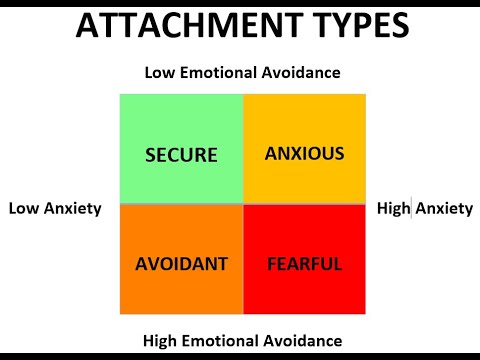Attachment theory has been prominent for decades now, but recently has received a lot of attention in pop culture and social media. On TikTok, the hashtag #attachmentstyles has been viewed more than a billion times. Rooted in science, attachment theory describes how people behave in relationships, from their desires for closeness and intimacy to their sensitivity to potential relationship threats.
Developed by psychoanalyst John Bowlby, attachment theory originally focused on how infants behaved when they were separated from their caregivers. In fascinating research done in the 1970’s, Mary Ainsworth conducted the “strange situation” study, revealing profound effects of attachment on behavior. In the study, researchers observed children between the ages of 12 and 18 months as they responded to a situation in which they were briefly left alone and then reunited with their caregivers. Based on the responses the researchers observed, Ainsworth described three major styles of attachment: secure, anxious, and avoidant. Later, researchers added a fourth attachment style – fearful avoidant (disorganized).
This long term study followed these children and found them to have the same attachment patterns in adulthood as observed in the study. The research confirms that adults exhibit similar patterns of attachment behavior in romantic and other close relationships. We are wired for attachment and depending on the behavior of our caregivers, later experiences and other factors, we develop a style of attaching that affects our behavior in close relationships. Our early attachment experiences lead us to form our internal working model which becomes a guide for how we navigate relationships and how safe and relaxed we are able to feel in them.
Adult attachment designates the same four attachment styles: secure, anxious, avoidant, and disorganized. As adults we don’t rely on caregivers for survival in the way that a child does, but we do have to go out into the world and deal with unfamiliar situations and difficult challenges. If we feel securely attached, we can do anything. We can take risks, be creative, and pursue our dreams. If we lack that sense of security and are unsure that the person closest to us truly supports us and will be there for us in times of need, we will find it much harder to maintain focus and engage in our lives in a healthy way.
People with a secure attachment style are overall comfortable with closeness and intimacy and are able to communicate their needs and feelings in relationships. Secure people tend to be warm and loving, generally trusting their partners without worry that they will be abandoned. Secure people are able to ask for emotional support when needed, and likewise are quick to offer emotional support to their partners.
People with an anxious attachment style crave intimacy and closeness, but they are highly sensitive to perceived relationship threats. They fear abandonment and tend to worry about whether their partner wants to be with them, requiring more frequent validation. They are likely to engage in something called protest behavior- for example if they feel their partner is being less attentive to them, they might do things to make their partner jealous or threaten to leave. Protest behaviors are misguided attempts to reestablish connection in the relationship.
People with an avoidant attachment style associate intimacy with a loss of independence and tend to withdraw when someone gets too close. They have difficulties asking for help and feel resentment when others act in dependent ways. This type of attachment style exhibits a decreased connection to emotions, risk aversion, and a preference to be alone and away from judgment. While less likely to verbalize their needs, they may tend to blame others for not meeting those needs and withdraw as a form of punishment. People with this attachment style deeply desire intimate relationships, but they feel overwhelmed by closeness and vulnerability.
People with a disorganized (fearful avoidant) attachment style desire connection but fear getting hurt and tend to push people away as a result. These people have tendencies of both anxious and avoidant attachment styles compounded by a core wound of betrayal and a sense of not being able to fully trust someone. This attachment style is the rarest and most often seen in people who have experienced severe trauma and abuse.
There is nothing inherently wrong with any attachment style, and by identifying and understanding yours you can gain a better understanding of yourself and your relationships. Avoid using attachment theory to label other people. Instead, use it as a tool to explore how you feel and communicate your needs within close relationships.
The good news is, your attachment style is not fixed- it can be changed through understanding and behavioral strategies. Although we typically identify more with one style, we’re too complex as people to be stuck with one for life. We’re continually changing, growing, and adapting to our relationships and environment, which influences our style. With awareness, attention and compassion we can all begin to elicit and receive from the world what we have needed all along.
Written By:
Rebecca Bowers, MA LMFT
Clinical Director
Lakes Center for Youth and Families


Recent Comments